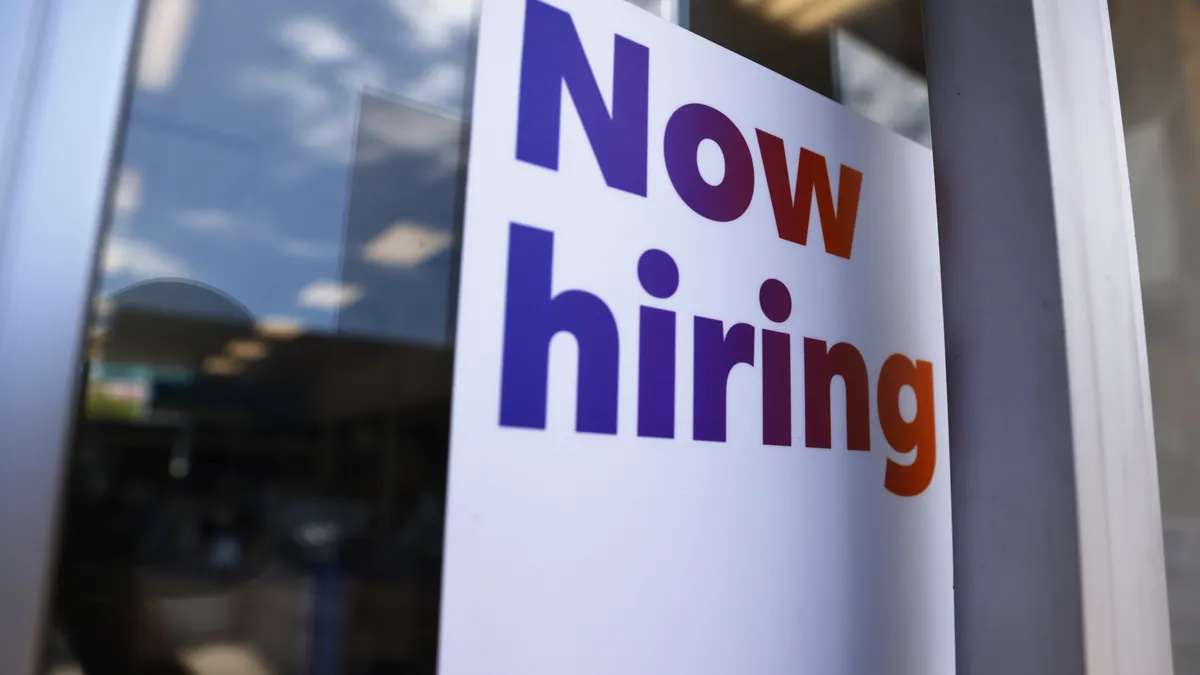Editor’s note: Emilie Shumway is an editor for HR Dive. This column explores how our personal lives intersect with the workplace. She can be reached at [email protected].
User experience writer and poet Kimberly Nguyen didn’t set out to become the “poet laureate of pay transparency,” as she recently tweeted. But her March 7 tweetstorm that recounted stumbling across a job post from her own employer on LinkedIn struck a nerve. The post featured her title, required qualifications and set of responsibilities — for up to $90,000 more than she was making.
“So I applied,” she said.
Beyond new applicants
Nguyen works in a contract-to-permanent UX writer position for Photon, a tech consulting and services firm based in New York City. She’s currently contracted out to Citibank, she told HR Dive.
My company just listed on LinkedIn a job posting for what I’m currently doing (so we’re hiring another UX writer) and now thanks to salary transparency laws, I see that they intend to pay this person $32k-$90k more than they currently pay me, so I applied.
— Kimberly Nguyen (@knguyenpoetry) March 7, 2023
Nguyen’s Twitter thread quickly went viral, with the first tweet amassing more than 220,000 likes so far, and, according to Twitter’s analysis, more than 12 million views.
She described “arguing for months about pay inequity,” a reality that became clearer to her after New York City’s pay transparency law laid bare the difference between her own salary and what other UX writers internally and elsewhere were likely making. “I was appalled,” she told HR Dive.
Nguyen’s managers at Citi directed her back to Photon, which determined her salary. Photon told her she’d need a performance review, which she is still waiting on. Photon did not respond to an HR Dive request for comment.
The job posting through which Nguyen applied closed, “but LinkedIn recommended a second posting to me, same position,” she said. “But the link was broken. I’m not really sure what was happening.”
Nguyen’s story illustrates how recently passed pay transparency laws will affect more than applicant demands: Employees can now see what their soon-to-be co-workers have the potential to make — and they can compare their own salaries in real time.
The ‘shroud of mystery’ is gone
“The law is working exactly how it’s intended,” Kate Bischoff, an employment law attorney and consultant, told HR Dive. “It’s intended to show what the ranges are and cause people to ask questions about what they’re making.”
Employers benefited from the “shroud of mystery” that surrounded salary information before, Bischoff said — a situation that allowed for a less careful approach to pay and a broader set of salary ranges because employees lacked the information to negotiate.
It’s not uncommon for employers to respond to changes in the labor market by broadening pay bands, especially when available talent is scarce. And many expect raises when they change employers; a Conference Board survey from last year found that nearly a third of workers who changed jobs during the pandemic saw a 30% pay increase.
But applicants aren’t the only ones looking, as Nguyen’s story highlights. “This is not an uncommon situation, and it’s one that every employer is struggling with,” Bischoff said. “Because when you try to do good [compensation], the rising tide raises all wages. And it’s hard to budget for that. It’s hard to find talent at what people are already making. And then it’s hard not to make your people upset when they see the pay ranges that don’t match what they make.”
In other words, employers are attempting a balancing act in keeping employees satisfied while maintaining attractiveness in a broader marketplace — and trying to reliably budget while accounting for the salary increases these goals will demand.
What can employers do?
The goal of pay transparency is largely to accelerate pay parity, as Bischoff noted. Experts have suggested companies set up policies that demonstrate how raises are earned, set salary ranges and provide checks and balances. Employees should understand how their pay is set and how they can earn more money. As the market changes, the compensation process may require continuous analysis and work, research has suggested.
If skeptical employers aren’t swayed by rising applicant expectations or social media embarrassment, they may want to consider potential legal threats. Assume, for example, a White male applicant applied for and was offered the same job as a current worker of a different background — at $50,000 more. Poorly planned transparency “is going to open the door to more potential discrimination claims,” Bischoff said.
Pay transparency may come with legal risks and its own set of challenges, but Bischoff has little patience with the argument that the shift will spell doom and gloom for employers. She pointed to the Davis-Bacon Act, which set prevailing wages for construction and other workers on federal contracts. Those industries have not broken down in the wake of this requirement, Bischoff said.
As for Nguyen, she awaits a performance review and potential salary increase — but she’s also looking for other UX writing roles. Offers and referrals have been streaming in, according to her Twitter feed. And thanks to the new salary transparency law, it’s likely she’ll be choosier about the job she ends up taking.
Once again, I’m so grateful to all of you who have reached out to me offering referrals, job leads, etc. Please continue to do so. I'm incredibly excited for what my future holds because this experience has really shown me what I'm made of, what I'm capable of.
— Kimberly Nguyen (@knguyenpoetry) March 17, 2023






















